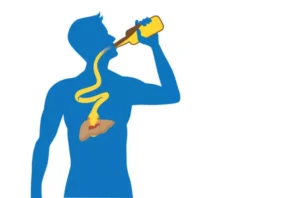What Are the Surprising Benefits of Sober Living Homes?

Regular accountability also helps to build trust and strengthen relationships among residents. Living with others who are committed to maintaining sobriety can create a strong sense of community and support, which is essential for long-term recovery. A striking advantage of Twelve-step program sober living homes is the profound sense of community and camaraderie they foster.
Healthy Addictions: Reprogramming Your Mind
Join our global mission of connecting patients with addiction and mental health treatment. Health insurance usually doesn’t cover sober living homes since they’re not considered medical treatment. There are several ways to cover the costs, making these supportive environments more accessible to a variety of people.
- Start your journey today, and experience how a sober living house can change your life for the better.
- Embracing the journey of sobriety is a testament to the resilience and determination of individuals committed to transforming their lives.
- There are a few of these sober living residences in Scotland, but little is known about them beyond experience and evaluations accumulated locally.
- This comprehensive approach allows individuals to confront underlying issues that contribute to substance use, enabling them to make conscious choices that favor recovery and well-being.
- While sober living homes do come with a cost, they can also offer significant savings when compared to other options, such as inpatient treatment or continued substance use.
How to Sidestep the Trap of News Addiction
This article will explore the many advantages of transitional living recovery homes, emphasizing how these environments provide the necessary support, stability, and accountability needed for long-term sobriety. From fostering a sense of community to teaching valuable life skills, sober living homes can play a pivotal role in preventing relapse and helping individuals build a strong foundation for lifelong recovery. Mastering recovery-focused routines is pivotal for individuals determined to maintain sobriety.

The Role of Sober Companions in the Recovery Journey
Participation in household duties, budgeting, meal planning, and time management activities fosters a sense of ownership and independence essential for life beyond recovery housing. Transitional living recovery homes offer a wide range of advantages for individuals in early recovery, providing a supportive, structured environment that promotes long-term sobriety. Whether you’re transitioning from rehab or seeking a stable environment to maintain your sobriety, these homes offer a community of understanding peers and life skills that foster lasting recovery. A sober living house is a supportive, drug-free living environment designed to help individuals who are recovering from addiction transition back into everyday life. These houses provide a safe, stable place to live while residents continue their recovery journey and support addiction recovery efforts.
This can mean a lack of privacy and personal space, which can be difficult for those who value alone time or solitude. However, one potential downside of access to resources and services is that some individuals may become too reliant on them. It is important for individuals to take responsibility for their own recovery and use these resources as a supplement to their personal efforts, rather than relying on them as a crutch. Explore relationships in recovery and learn how to build support for healthier, lasting connections. Discover essential inpatient rehab guidelines to navigate treatment and ensure successful recovery outcomes.
Conflicts with Housemates
In most sober living homes, residents are required to follow certain house rules, such as maintaining sobriety, attending regular meetings, completing household chores, and adhering to curfews. Research indicates that sober living homes significantly reduce the risk of relapse for individuals in recovery. It shows that 60% of residents maintain sobriety for at least one year after staying in a sober living home. One of the key benefits of living in a sober living home is the opportunity to develop healthy habits and routines. Residents are encouraged to participate in activities that promote physical and mental well-being, such as regular exercise, healthy meal preparation, and mindfulness practices. These activities not only support the recovery process but also help individuals establish a sense of normalcy and stability in their lives.

Does Medicare Cover Alcohol & Drug Rehab?
It allows individuals to develop the necessary coping mechanisms, build a strong support network, and establish a healthy, sustainable lifestyle that supports their recovery. By actively participating in sober living environments, residents can combat feelings of loneliness. The communal aspect of these homes allows them to form connections, share insights, and provide emotional support. This closeness significantly reduces the risk of relapse, as individuals have a network that encourages positive habits and behaviors.
- Sober living residents learn from each other’s stories, share advice, and listen without judging.
- Most sober living homes require residents to attend house meetings and adhere to a set of rules and guidelines.
- Overall, sober living homes offer significant relapse prevention mechanisms by ensuring a supportive, structured atmosphere that prioritizes recovery.
Without alcohol or drugs in their systems, residents are sober house in mattapan exposed to less toxic elements that might pollute their systems. Many sober living homes also offer exercise programs and nutritional meals designed to foster overall well-being. That’s just one benefit of substance-free environments such as sober living homes that support long-term recovery while simultaneously offering improved physical well-being for their inhabitants. Residents not only provide encouragement and understanding but also hold each other accountable. They celebrate each other’s victories, whether they’re small daily achievements or major milestones in recovery.
The Role of Inpatient Detox Programs

Engagement in peer support initiatives, such as group discussions and house meetings, reinforces the principles of accountability and encouragement among residents. These interactions allow individuals to voice their challenges, celebrate their victories, and exchange advice, fostering a collaborative learning atmosphere. Moreover, living in a sober environment can help individuals avoid the negative influences and environments that may have contributed to their substance use in the past.
Q: How long do most people stay in sober living?
Additionally, some transitional living recovery homes offer vocational training, educational resources, and job placement assistance to help residents reintegrate into the workforce or pursue further education. By providing these resources, sober living homes empower individuals to build a stable, independent life, reducing the risk of relapse by giving them the tools they need to succeed in their recovery journey. A sober living house is a safe, drug-free place for people recovering from addiction.





